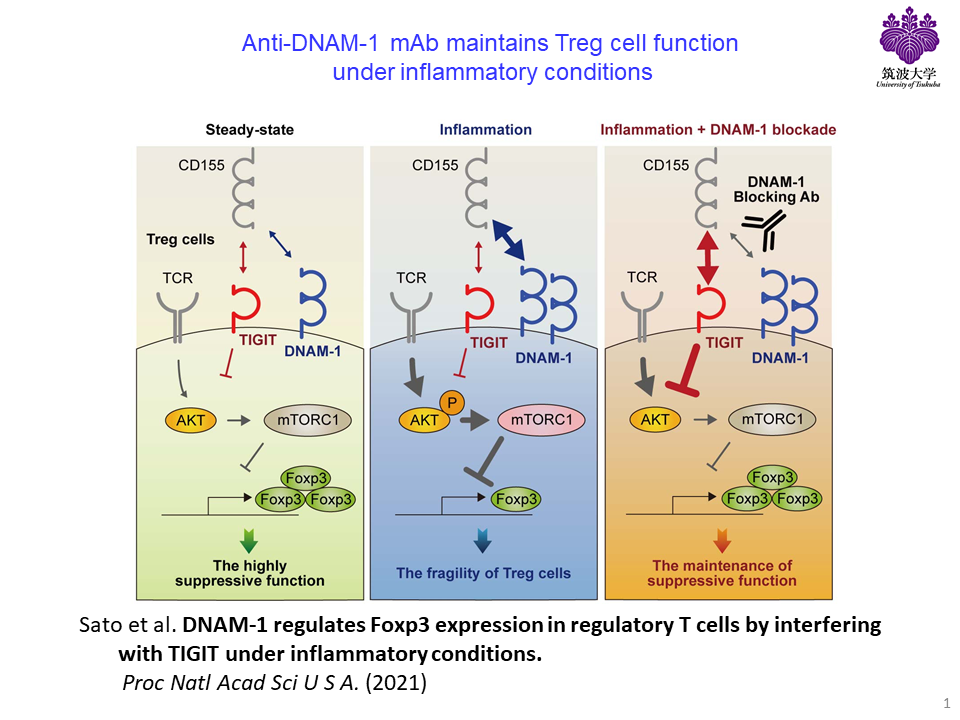・DNAM-1 regulates Treg cell function via TIGIT signaling and down-regulate Treg cell function
・DNAM-1 blockade promotes TIGIT signaling and enhances Treg cell function under inflammatory conditions
Abstract
Regulatory T (Treg) cells that express forkhead box P3 (Foxp3) are pivotal for immune tolerance. Although inflammatory mediators cause Foxp3 instability and Treg cell dysfunction, their regulatory mechanisms remain incompletely understood. Here, we show that the transfer of Treg cells deficient in the activating immunoreceptor DNAM-1 ameliorated the development of graft-versus-host disease better than did wild-type Treg cells. We found that DNAM-1 competes with T cell immunoreceptor with Ig and ITIM domains (TIGIT) in binding to their common ligand CD155 and therefore regulates TIGIT signaling to down-regulate Treg cell function without DNAM-1-mediated intracellular signaling. DNAM-1 deficiency augments TIGIT signaling; this subsequently inhibits activation of the protein kinase B-mammalian target of rapamycin complex 1 pathway, resulting in the maintenance of Foxp3 expression and Treg cell function under inflammatory conditions. These findings demonstrate that DNAM-1 regulates Treg cell function via TIGIT signaling and thus, it is a potential molecular target for augmenting Treg function in inflammatory diseases.
Benefit
The administration of an anti-DNAM-1 neutralizing antibody can ameliorate the pathology of inflammatory diseases via augmenting Treg cell function.
Market Application
Molecular target for augmenting Treg function in inflammatory diseases
Publications
https://pubmed.ncbi.nlm.nih.gov/34011606/
IP
Date: Apr 19th, 2017
Number: US11059888B2
Status: Granted
URL: https://worldwide.espacenet.com/patent/search/family/060116156/publication/WO2017183665A1?q=PCT%2FJp2017%2F015767&queryLang=en%3Ade%3Afr
Other
https://www.tsukuba.ac.jp/en/research-news/20210518160000.html
https://tnaxbio.com/

